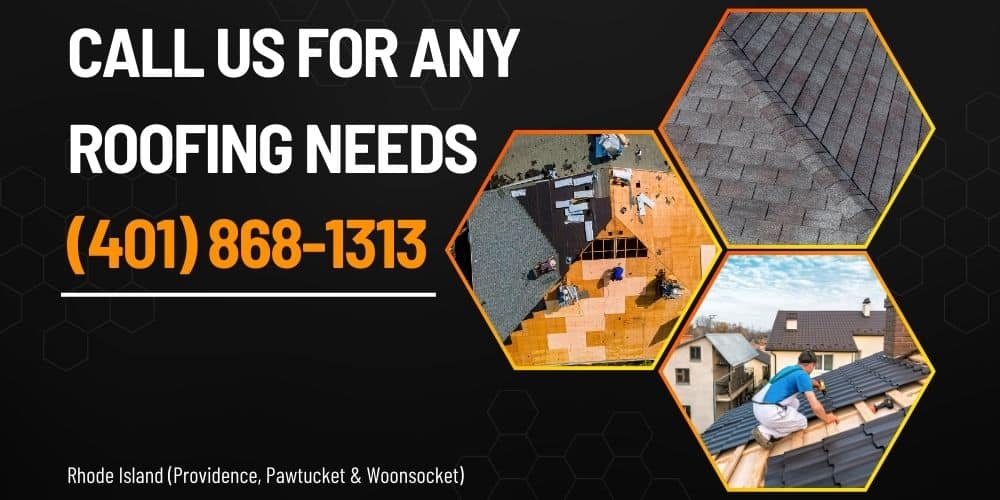A drip edge ensures water flows off the roof correctly. Ultimately, it safeguards structural integrity.
Whether you’re planning a roof replacement or inspecting your existing one, you will know about this essential element in this post.
What is a Drip Edge?
It’s a metal flashing installed along roof edges to direct water away from the fascia and into gutters. It prevents water damage, protects the roof deck, and enhances durability by reducing moisture infiltration. Drip edges are essential for maintaining roof integrity and complying with modern building codes.

This flashing is typically made from aluminum, galvanized steel, or copper. It’s installed under the shingles and extends slightly beyond the roof’s edge.
The primary function is to prevent water from seeping into areas where it shouldn’t, such as the fascia board or the underlayment, which can lead to rotting or other structural problems.
How a Drip Edge Works
The “drip edge” creates a barrier between water and the roof’s vulnerable areas.
- Rainwater or melting snow flows down the roof’s slope.
- The drip edge directs this water into the gutters, preventing it from dripping onto the fascia or collecting under the shingles.
- Its overhanging design ensures that water is kept away from the roof deck and siding.
Without a drip edge, water can infiltrate the roof’s underlayment and fascia, causing damage over time.

What Is the Purpose of a Roof Drip Edge?
The purpose of a drip edge goes beyond just water management:
- Protects the roof deck from water intrusion.
- Prevents fascia and soffit damage by guiding water into the gutters.
- Stops insects from entering the roof system.
- Supports the shingles at the edge, preventing them from sagging or cracking.
Types of Drip Edge
Drip edges come in various styles and materials, each suited for specific roof types and needs:
- Type C: A simple “L-shaped” profile, often used for steep-sloped roofs.
- Type D: Also known as “T-style,” it has a T-shaped edge that offers extra protection and is commonly used for low-slope roofs.
- Type F: Features an extended drip edge flange, ideal for reroofing projects where extra coverage is needed.
Each type is available in aluminum, galvanized steel, and copper.
Why a Drip Edge Is Essential for Your Roof

A drip edge is not merely a roofing accessory; it’s an integral part of a well-functioning roof. Here’s why:
- Prevents Water Damage: It ensures water is directed away from vulnerable areas.
- Extends Roof Longevity: Protecting the underlayment and fascia reduces wear and tear.
- Improves Roof Aesthetics: Gives the roof a clean, finished look.
- Meets Building Codes: Many local codes now require drip edges for new roof installations.
Benefits of Having a Drip Edge
The advantages of installing a drip edge include:
- Prevents roof deck rot by directing water away.
- Reduces pest infestations, blocking insects and rodents from entering the roof structure.
- Enhances gutter performance, ensuring smooth water flow.
- Increases overall roof durability by protecting its edges.
Why Would a Roofer Leave Off a Drip Edge During a Roof Replacement?

There are several reasons a roofer might skip installing a drip edge:
- Cost Savings: Some contractors cut costs by omitting non-mandatory components.
- Older Roofing Practices: In the past, drip edges were not standard.
- Oversight: Inexperienced or rushed contractors may neglect this crucial step.
If your roofer skips the drip edge, it can cause long-term damage and costly repairs. Always confirm that your contractor includes a drip edge in their roofing plans.
Can You Install Drip Edge on an Existing Roof?
Yes, you can install a drip edge on an existing roof, though it’s slightly more complicated than installing it during initial roof construction. Retrofitting a drip edge involves carefully lifting shingles and sliding the flashing underneath them.
While this can be a DIY project for experienced homeowners, hiring a professional is recommended to ensure proper installation without damaging the shingles.
How Much Does Installing Drip Edge Cost?
The cost of installing a drip edge depends on several factors, including the material and size of your roof:
- Material Costs: Aluminum is the most affordable, costing $1–$2 per linear foot. Copper, on the other hand, can cost $4–$8 per linear foot.
- Labor Costs: Expect to pay $300–$700 for professional installation on an average-sized roof.
While it might seem like an added expense, investing in a drip edge can save you from costly water damage repairs.
When You Don’t Need a Drip Edge
Although a drip edge is beneficial in most cases, there are a few scenarios where it might not be necessary:
- Existing roof designs that already include built-in water management systems.
- Historic homes where adding a drip edge might compromise the building’s original aesthetic.
However, proper water runoff solutions should be in place even in these cases.
Signs a Drip Edge Needs Replacement
Over time, drip edges can wear out, becoming less effective. Look out for these warning signs:
- Rust or corrosion, especially in metal edges like steel or copper.
- Water stains on the fascia or soffit.
- Warped or loose sections of the drip edge.
- Visible gaps between the drip edge and roof edge.
Replacing a damaged drip edge will help maintain your roof’s health and longevity.
A properly installed drip edge of the roof is a small investment with a big payoff. From protecting your home against water damage to enhancing your roof’s durability, this simple component is a roofing essential.
If you need help with the condition of your drip edge or need one installed, contact a trusted roofing professional today!
Ready to elevate your home’s protection and curb appeal? Call us at (401) 868-1313 today for expert roofing solutions in Rhode Island (Providence, Pawtucket & Woonsocket) – because your roof deserves the best care it can get!




